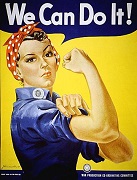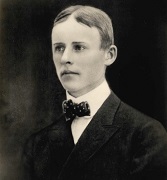|
Home
What's
New
Photo
of the Month
Minerd.com
Blog
Biographies
National Reunion
Interconnectedness
Cousin
Voices
Honor
Roll
In
Lasting Memory
In the
News
Our
Mission and Values
Annual
Review
Favorite
Links
Contact
Us
| |

|
'Burgh
Nation
The Pittsburgh Region's Enduring Legacy of Creativity and Innovation
|
|
|
|
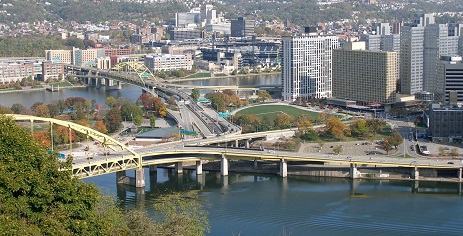
|
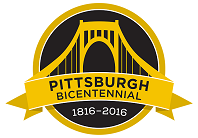  For more than 250 years,
since its founding as a frontier military outpost, Pittsburgh and
Southwestern Pennsylvania have been an epicenter for world-changing creation and innovation. For more than 250 years,
since its founding as a frontier military outpost, Pittsburgh and
Southwestern Pennsylvania have been an epicenter for world-changing creation and innovation.
Through
this page, Minerd.com seeks to celebrate the unique
contributions Pittsburghers have made to mainstream Americana in ways that have led to
lasting impact on the arts, culture and business.
This page is not primarily devoted to celebrity
popularity or extraordinary talent alone. Rather, it marks those initiatives
which led to a standing permanent,
institutional presence or social/cultural treasures and movement.
It has been inspired by and adapted
from a prototype study popularly known as "How
Pittsburgh Changed the World," produced by Pittsburgh's award-winning
historical museum, the Senator John
Heinz History Center, an affiliate of the Smithsonian Institution. The
History Center was the site of our national family reunion in 2008, "Pittsburgh 250."
|
|
|
Andrew
Mellon, Mellon Bank and the National Gallery of Art
|
 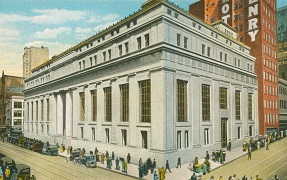
|
| After amassing a fortune in the
family-owned T. Mellon Sons (Mellon Bank, above) in Pittsburgh, and investing in
world-class masterpiece art, Andrew W. Mellon served as Secretary of the
Treasury under Presidents Harding, Coolidge and Hoover and as U.S. Ambassador to
the Court of St. James. In 1937, with his financial support and donation of
hundreds of priceless original artworks, the nation broke ground for the
National Gallery of Art (below) in Washington, D.C. His son Paul Mellon, a
philanthropist, served as trustee of the gallery from 1937 to 1999. The bank is
now part of Bank of New York Mellon. |
|
|
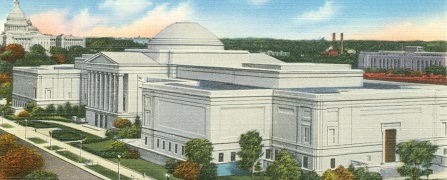
|
|
|
|
H.C. Frick, Frick Coke
and The
Frick Collection, New York |
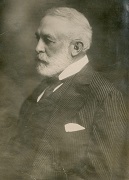 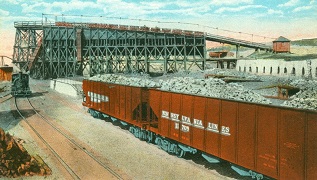
|
| Henry Clay "H.C." Frick, born in
West Overton near Pittsburgh in 1849, began buying and building low-cost coke
ovens in southwestern Pennsylvania and was a millionaire before the age of 30.
He later became business partner with Andrew Carnegie and their coke and steel
empire became United States Steel. (His
Lemont Furnace mine, above.) Frick also was an avid collector
of original masterpiece paintings, and one banker visited his operation and
noted that he “may be a little too enthusiastic about pictures, but not enough to hurt.”
He later amassed one of the greatest collections in the country, culled from
European sources, which today are on display in his former homes Clayton in
Pittsburgh and the Frick Collection in New
York (below). |
|
|
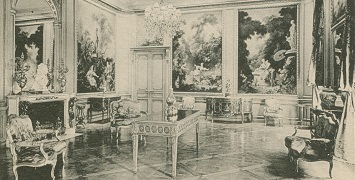
|
|
|
|
St. Louis Arch, Iconic
Symbol of the Gateway to the West
|
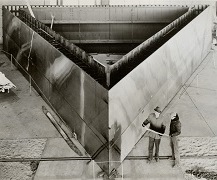

|
| Left, a test assembly of
the first of 142 stainless steel sections forming the 630-ft. high St. Louis
Arch under fabrication by the Pittsburgh-Des Moines Steel Company. The
triangular shaped section, 54 feet long on each side, serves as the base of one
of the arch's legs. Each section was shipped from Pittsburgh to St. Louis on
special railcars. Photo courtesy of Pittsburgh-Des Moines Steel. Right: the
soaring landmark defines the image of St. Louis today as the gateway to the
west. |
|
|
|
|
John Roebling, Wire
Rope and the Brooklyn Bridge
|
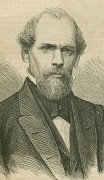 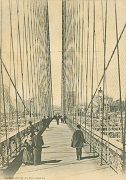
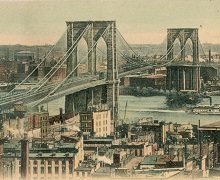
|
| Prussian immigrant John A.
Roebling, a civil engineer who settled in Saxonburg near Pittsburgh, solved the problem of
how to support great weights through his invention of wire rope which led to the
development of suspension bridges. He used his experience with bridges in
Pittsburgh, New Jersey and Cincinnati to help design the Brooklyn Bridge in New
York, which opened in 1883. Portrait from Harper's Weekly, Aug. 7, 1869. |
|
|
|
|
Edgar Kaufmann, Frank
Lloyd Wright and Fallingwater
|
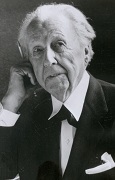 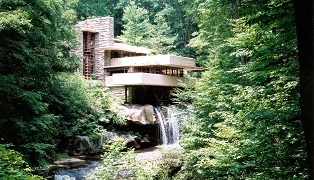 |
| Widely acknowledged as the nation's most famous modern house,
and designed in the 1930s over a waterfall by Frank Lloyd Wright (left) for the Edgar J. Kaufmann Sr. family,
Fallingwater® is a property of the Western Pennsylvania Conservancy.
It's a 90-minute drive from Pittsburgh in Fayette County. Wright image courtesy PBS. |
|
|
|
|
KDKA - Pioneering Radio
Station
|
 |
| The first commercial radio
station in the country, KDKA-AM, began broadcasting the Harding-Cox presidential
election returns on Nov. 2, 1920. Pictured here is the entire personnel and
equipment from that historic evening, showing the station engineer, announcer
and two assistants collection news reports. Left to right: R.S. McClelland,
licensed operator William Thomas, announcer L.H. Rosenberg and John Frazier.
Today KDKA is the Pittsburgh affiliate of CBS Radio. Courtesy Westinghouse. |
|
|
|
|
Andrew Carnegie, Carnegie
Steel and the Carnegie Libraries
|
 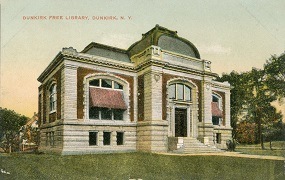
|
| Above: Scottish immigrant
Andrew Carnegie, who came to Pittsburgh in 1848 as a lad of 12. He went on to
found a steel empire that helped gird the nation's rapidly expanding
infrastructure. As a philanthropist, he funded 2,509 Carnegie libraries across
the nation and overseas, including one in Dunkirk, NY (right). Below left: Carnegie
Steel's Duquesne Furnaces. In 1901, he sold Carnegie Steel to a group headed by J.P. Morgan and Elbert
H. Gary, thus forming "United States Steel," the world's first "billion dollar corporation," comprising
American Steel & Wire, National Tube, American Tin Plate, American Steel Hoop
and American Sheet Steel.
Below right: molten steel at the Gary Works in Indiana. Today U.S. Steel is the largest integrated steel producer headquartered in the United States. Molten steel image courtesy U.S.
Steel. |
|

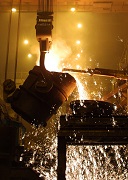
|
|
|
|
Birth of Czechoslovakia --
the 1918 "Pittsburgh Agreement"
|
|
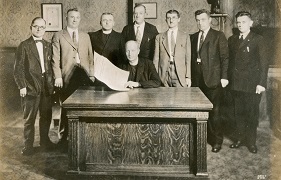
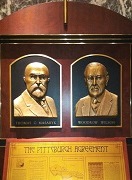
|
| Left: the nation of Czechoslovakia was
formed in Pittsburgh in 1918 with the "Pittsburgh Agreement" signed by Dr. Thomas G. Masaryk, first president of the
new republic, and American leaders. In this image, Pittsburgh district Czecho-Slovak leaders
in 1926 stand behind Msgr. Andrew Hlinka, who holds a copy of the pact. Right:
plaque today in Pittsburgh's CNG Tower featuring the bas relief portraits of Masaryk and
President Woodrow Wilson. |
|
|
|
|
George Westinghouse and
the Railroad Air Brake
|
|

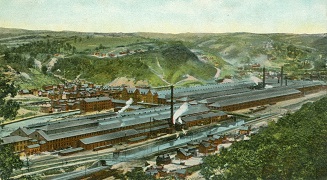
|
| Entrepreneur George Westinghouse patended nearly 400 inventions and founded some 60 companies in his lifetime. Among his innovations was the railroad air brake -- using
compressed air with much greater effect -- and an electrical system utilizing
alternating current, leading to creation of the continuous- filament tungsten light bulb.
The air brake revolutionized rail transportation by making longer, heavier and
faster train travel possible while enhancing safety. Among his companies were Westinghouse
Electric, Westinghouse Air Brake (today's WABTEC)
and Union
Switch & Signal (today's Ansaldo
STS). Right: the sprawling air brake plant in East Pittsburgh. |
|
|
|
|
Birthplace of
Professional Football
|
|
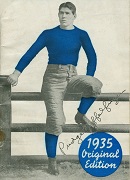
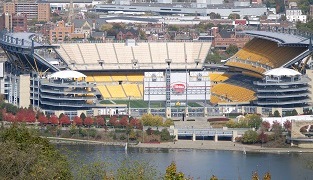
|
| On Nov. 12, 1892, the Allegheny Athletic Association football team
in Pittsburgh paid one of its players -- Yale graduate William "Pudge"
Heffelfinger, seen here -- the sum of $500 to compete in a game against the Pittsburgh Athletic Club.
Not only did the AAA team win the contest, but the act marked the Steel City as
the birthplace of professional football. Today the six-time Super Bowl champion
Pittsburgh Steelers are one of the most successful and respected franchises of
the National Football League with a worldwide following. |
|
|
|
|
H.J. Heinz Company and His
"57 Varieties"
|
|
 
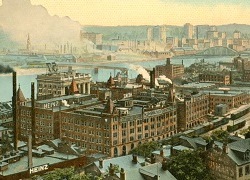
|
| Pittsburgh's Henry J. Heinz. founded the
forerunner to H.J. Heinz Company in 1869 and turned its ketchup and other
condiments into worldwide brands, touting the slogan "57 Varieties."
Having founded the company in Sharpsburg, PA, he maintained a manufacturing plant on
Pittsburgh's North Side for decades. The
company was purchased by Warren Buffett's Berkshire Hathaway in 2013. Portrait
and bottle images
courtesy of H.J. Heinz Company. |
|
|
|
|
Forbes Field: the Pirates' Steel and
Concrete Home
|
|

|
| Built in 1909 by owner Barney Dreyfuss as
the new home of the Pittsburgh Pirates of the National Baseball League, Forbes
Field was the nation's first three-tiered steel and concrete ballpark, setting a
precedent for other team owners over the next few years, among them Boston's
Fenway Park and Chicago's Wrigley Field. |
|
|
|
|
WQED Public TV &
Mister Rogers
Neighborhood
|
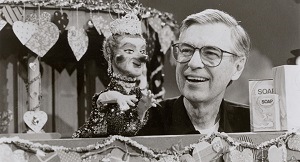
|
| Going on the air for the
first time on April 1, 1954, Pittsburgh's WQED-TV was the first community
supported television station in the United States. In 1955 it was the first to
telecast classes to elementary schools. From 1968-1976 and 1979-2001, WQED
produced the widely acclaimed half-hour Mister Rogers Neighborhood series
for children hosted by Fred Rogers and featuring such puppet characters as King
Friday XIII, Lady Elaine Fairchilde, X the Owl and Daniel Striped Tiger. Mister
Rogers set a national standard for quality children's TV programming. |
|
|
|
|
Andy Warhol and the Pop
Art Movement
|
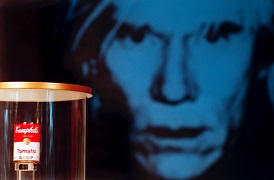
|
| Born in Pittsburgh in 1928, Andy Warhol
studied at what is now Carnegie Mellon University before moving to New York to
begin his career as a commercial illustrator and later in the visual arts,
widely known as the "pop art movement." His multi-color paintings of
Marilyn Monroe and Campbell's Soup cans are considered icons of the genre, and
today Pittsburgh's Andy Warhol Museum is a
world-renowned repository of his work and legacy. Courtesy Pittsburgh Regional Alliance. |
|
|
|
|
Jonas Salk and the Cure for Polio
|
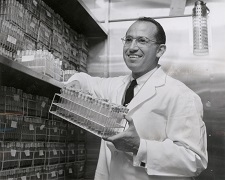 
|
| Left: Dr. Jonas Salk,
researcher at the University of Pittsburgh, was instrumental in developing a
preventive vaccine for the crippling polio disease. National Foundation-March of
Dimes. Right: aided by the vast resources of the Bill and Melinda Gates Foundation and the
Rotary International Foundation, children have been inoculated around the world, and today only pockets
of polio cases are reported each year in a
handful of Third World nations. Rotary International. |
|
|
|
|
The Ferris Wheel and
Big Mac
|
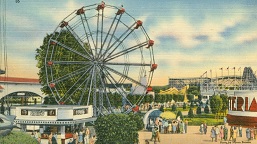

|
For the 1893 Chicago
World's Columbian Exposition, and with the goal of outdoing France's Eiffel
Tower as a technical challenge, Pittsburgh engineer George W.G. Ferris Jr.
invented an amusement park ride that today bears his name -- the "Ferris
Wheel." The owner of Pittsburgh's Ferris & Co., he tragically died in
Pittsburgh at the age of 37 on Nov. 22, 1896.
In 1967, enterprising McDonald's franchise owner Jim Deligatti in Pittsburgh placed two beef patties
together with fixings in one sandwich and created the Big Mac. It was so popular that the
company rolled it out to a national audience the following year. Today it
remains a staple of McDonald's menus. Courtesy McDonald's Newsroom. |
|
|
|
|
Center for Organized
Labor Unions
|
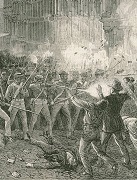
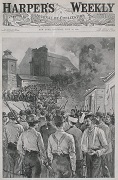
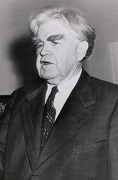
|
| Pittsburgh was the scene
of the founding of labor organizations which today widely represent American
working men and women. Among these was the Federation of Organized Trades and
Labor Unions of the United States and Canada, created on Nov. 15,
1881, later renamed the American Federation of Labor (AFL). In 1896, the
International Association of Bridge, Structural, Ornamental and Reinforcing Iron
Workers was formed. And on Nov. 14, 1935, in the heart of the
Great Depression, based on an idea proposed by John L. Lewis (right), Pittsburgh
also was the site of the founding of the Congress of Industrial Organizations
(CIO). An exceptionally violent confrontation between management
and labor took place in Pittsburgh -- the 1877 Railroad
Strike, which caused millions of dollars in damages (left); and the 1892
Homestead Steel strike, in which 12 picketing steel laborers and company-hired
Pinkerton Detectives were killed, and 23 wounded (center). Today the combined AFL-CIO
represents 1.25 million workers among 56 unions. |
|
|
|
|
Pittsburgh Plate Glass
Company (PPG Industries)
|
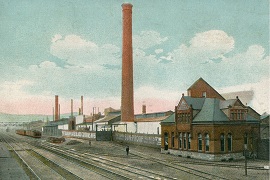

|
| Pittsburgh Plate Glass
Company, known today as PPG Industries, was founded in 1883 and became the first
commercially successful plate glass maker in the country while adding paints to its product line. Among its founding
team were Capt. John B. Ford and John Pitcairn, with offices on Fourth
Street in Pittsburgh, and local plants in Charleroi (above), Creighton and Ford
City. Among its innovations in the 1920s was development of 500 colors for the automotive industry; in the 1930s of heat-absorbing glass and tempered glass; in the 1940s of laminated aircraft glass and optical products; in the 1950s of lead-free house paints and fiberglass; and in the 1960s of rust-proof paints. Today PPG Industries has more than 42,000 employees and is a Fortune 500 producer of paints, coatings, optical products, specialty materials, glass and fiber glass. Below: the historic first glass casting on Feb. 20, 1883, at Creighton by PPG's forerunner New York City Plate Glass Company. |
|

|
| |
|
Gulf Oil and the First
Drive-In Gasoline Service Station
|
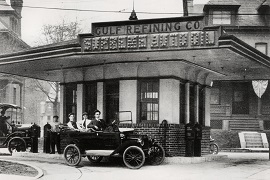
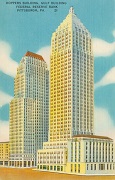
|
| In 1913,
Pittsburgh-headquartered Gulf Oil Corporation opened the world's first drive-in
gasoline service station in the city's East Liberty neighborhood. It was to
entirely change the concept of the marketing of gasoline, establish an enduring
format and style for similar stations, and permanently change the name of such
outlets to "service" from "filling." Gulf's office building,
at right, served as headquarters for decades until the company was purchased by
Chevron in 1984. |
|
|
|
|
Shippingport: Nation's
First Atomic Power Station
|
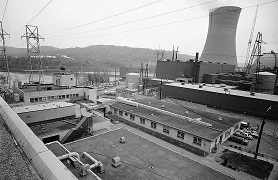
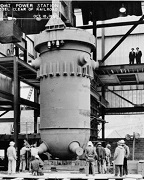
|
| Constructed by
Pittsburgh's Duquesne Light Company, the Shippingport Atomic Power Station was
the first large-scale central station nuclear power generating facility in the world in
peacetime. It is said to have "personified America's high hopes for
peaceful nuclear power" and went on-line on Dec. 2, 1957. The plant was featured on the front page of
the New York Times and in the Sept. 21, 1957 edition of Life Magazine. |
|
|
|
|
Edwin Drake and Titusville -
Launch of the Modern Oil Industry
|
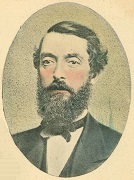
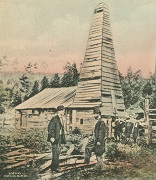
|
| Circa 1859, Col. Edwin L.
Drake, left, pioneered new techniques to systematically drill for and extract
oil in the Oil Creek region of Titusville, Franklin and Oil City, 90 miles
northeast of Pittsburgh. His successes helped launch a national oil frenzy which
drew the interest of a young John D. Rockefeller who quickly leveraged the
opportunity during the Civil War to build Standard Oil Company and become what author Ron Chernow calls
"the undisputed king" of the world of commerce. |
|
| |
| The Courier, the Nation's Most Influential Black Newspaper |
 |
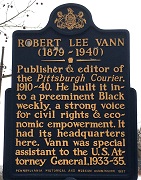 |
Under the three-decade leadership of publisher Robert Vann, the weekly Pittsburgh Courier newspaper grew in influence to become what has been called "the country's largest and most politically important black newspaper." Located in the city's Hill District, the Courier was a forceful advocate for civil rights and economic empowerment nationwide as it published regional versions such as the "Chicago Edition." The paper's sports coverage provided important coverage for the integration of minority players into professional athletics. News window image courtesy Library of Congress. |
|
|
|
|
Meadowcroft - Earliest
Known Human Habitation |
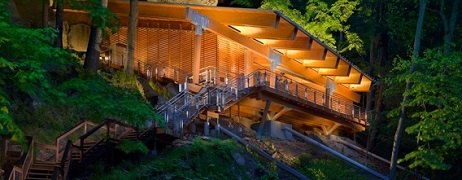 |
| Meadowcroft -- Archaeology
of a rock overhang near Avella, PA, demonstrating the earliest known human habitation
dating back 16,000 years, an excavation led by James M. Adovasio, Ph.D. Courtesy Senator John Heinz History
Center, an associate of the Smithsonian Institution. Photo by Ed Massery. |
|
| |
| Gertrude Stein and Avant-Garde Paris |
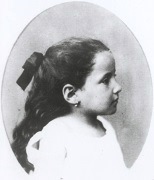  |
| Born in Pittsburgh's North Side in 1874, Gertrude Stein went on to become a writer and art collector who surrounded herself with avant-garde artists and the "Lost Generation." In the salon she kept in Paris in the 1910s and '20s, and throughout her travels, she cultivated relationships with and promoted the talent of such luminaries as Bernard Berenson, Paul Cézanne, F. Scott Fitzgerald, Ernest Hemingway, James Joyce, Henri de Toulouse-Latrec, Henri Matisse, Pablo Picasso, Ezra Pound, Pierre-August Renoir and others. Photos courtesy Beinecke Rare Book and Manuscript Library, Yale University, in association with the book Gertrude Stein: In Words and Pictures. |
|
| |
| Rachel Carson and the Environmental Movement |
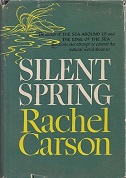 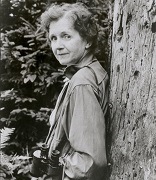 |
| Rachel Carson helped birth the modern American environmental management movement with publication of her 1962
book Silent Spring about the dangers of pesticides. Dust jacket courtesy Wikipedia. Photo courtesy Rachel Carson Council and the Corporation for Public Broadcasting. |
|
| |
| Barney Dreyfuss and Baseball's World Series |
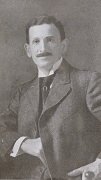  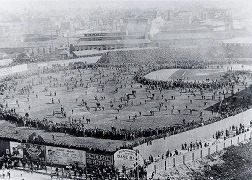 |
| In 1909, after winning baseball's National League championship, the Pittsburgh Pirates faced off against the Boston Red Six in the first ever World Series, led by team owner Barney Dreyfuss (left) and future hall of famer Honus Wagner, inaugurating what has become the beloved "Fall Classic" of Major League Baseball. Crowd image courtesy Wikipedia. |
|
| |
| Artificial Ice Rinks and the Popularity of Hockey |
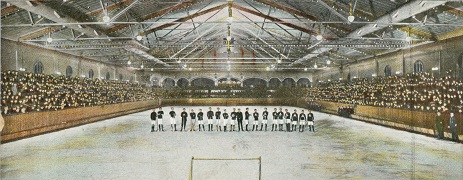 |
| Pittsburgh was the site of the first artificial ice surface in North America, dating to 1895 in the Schenley Park Casino, where public skating and organized hockey took place. The original rink was said to have had an elliptical shape, measuring 225 ft. by 70 ft. The Casino's successor rink in Pittsburgh, the Duquesne Gardens, is seen here. Artificial ice has underpinned the growth of hockey's popularity around the globe, as evidenced by such institutions as the National Hockey League and the Winter Olympics. |
|
| |
| Inspiration for Iconic World War II Imagery |
|
"We Can Do It!" -- This iconic poster, created by graphic artist J. Howard Miller of Pittsburgh-based Westinghouse Electric Company, portrayed the strength of women working in factories and shipyards during World War II. Nicknamed "Rosie the Riveter," the image of this tough, hard-working woman in overalls and bandanna became a widespread symbol of patriotic womanhood. Produced by Westinghouse for the War Production Co-Ordinating Committee. Courtesy National Archives, Still Picture Branch (NWDNS-179-WP-1563). |
|
| |
| John Harris and the World's First Motion Picture Theatre |
| Entrepreneur John P. Harris opened the world's first all-motion picture theatre in Pittsburgh in June 1905 at what today at 433-435 Smithfield Street. Seating 96 people, it was coined "Nickelodeon" ("nickel" for the 5 cent admission and "odeon" which is Greek for "theatre"). It marked the beginning of the motion picture theatre industry. |
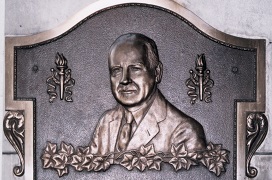 |
|
| |
| Dr. Thomas Starzl and Kidney Transplants |
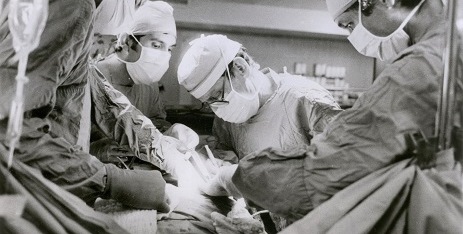 |
| The University of Pittsburgh Medical Center, led by the late Dr. Thomas Starzl (shown here), is world renowned for its innovations in solid organ transplant procedures and was among the first to utilize breakthrough medicines to prevent rejection of new organs by patients' immune systems. UPMC also has helped create anti-rejection therapies that have proven to be more effective with fewer side effects. Among its world's firsts are transplants of several organs at a time and simultaneous intestine, lung and pancreas transplants. Courtesy PBS, "The Health Century." |
|
| |
| Stephen Foster and 19th Century Popular Songwriting |
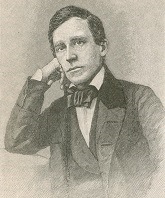 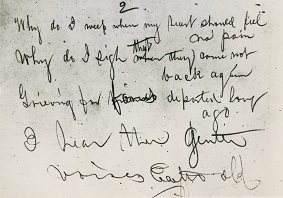 |
Born in Pittsburgh, Stephen Foster Collins is known as a "father of American music" and one of the best-known writers of popular songs in the mid-1800s. Among his classics are "My Old Kentucky Home," the official state song of Kentucky, and "Swanee River/Old Folks At Home." Others are "Beautiful Dreamer" - "Camptown Races" - "Jeanie with the Light Brown Hair" - and "Oh! Susanna!". His manuscripts were collected by Josiah Kirby Lilly Sr. Lilly's research made "great advances in American musical bibliographical technique, and [has] thrown much light on publishers' methods," said David A. Randall's book, Dukedome Large Enough.
Lilly donated the collection in 1937 to the University of Pittsburgh, today housed in the Foster Memorial Building. Much of his work has been adapted over the years in songs, film and television. Some contain racial overtones which have lessened his following today, and in 2018 a controversial statue depicting him with a Black banjo player was removed from Pittsburgh's Schenley Park. Left: Harper's New Monthly, Vol. LXII, No. 367, 1880. Right: University of Pittsburgh. |
|
| |
| Martha Graham and Modern American Dance |
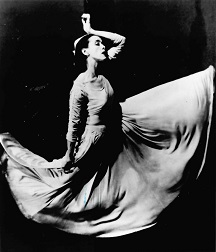 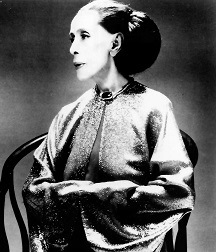 |
Martha Graham - Born on Pittsburgh's North Side in 1894, she is known as the "mother of modern dance" for forever changing the rules of what dance could be in form and technique. Also a choreographer and instructor, she developed ways of the art still utilized around the globe. Courtesy Public Broadcasting System. |
|
| |
| Aviation Firsts and Innovations |
 |
Above: When the Greater Pittsburgh International Airport opened in 1952, it featured the world’s first airport movie theater, public observation decks to view the field and a restaurant. It replaced the Allegheny County Airport, which when opened in 1931 contained the country’s only hard-surface airport and the first with a fully lighted airfield. Earlier still, in 1927, the West Mifflin airstrip known as Bettis Field was the departure site for the first U.S. air mail route. Below: Today's airport is known for its unique X-shaped midfield terminal that still makes it one of the world’s most innovative in aviation. Courtesy Allegheny County Airport Authority. |
|
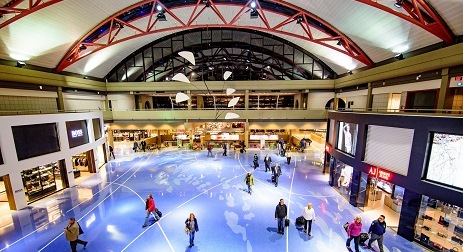 |
| |
Among the Globe's Greatest Bridges
|
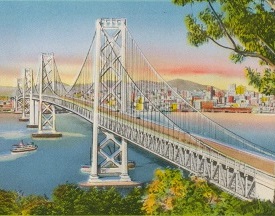 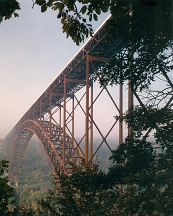 |
| Fabricated in the Pittsburgh suburb of Ambridge, the American Bridge Company furnished steel for some of the globe's greatest and most innovative bridges, among them the San Francisco-Oakland Bay Bridge (left, one of the longest in the USA), West Virginia's New River Gorge Bridge (right, at the time, the world's longest single-span arch) and the Verrazano Narrows Bridge in New York (the longest suspension bridge in the world). New River photo courtesy the late William J. Boyd Jr. |
| |
| The Banana Split |
The legendary banana split dessert was invented by apprentice pharmacist David Strickler in 1904 in the Tassell Pharmacy in Latrobe, 40 miles from Pittsburgh. He combined bananas cut lengthwise with ice cream and fruit and served his concoction in a boat-shaped glass dish. While two other American towns claim credit, Strickler's is the first and best-documented. Edward Allen Lim, Flickr
|
| |
|
Alcoa, the Aluminum Company of America
|
|
The Aluminum Company of
America Incorporated was founded on Oct. 1, 1888 as Pittsburgh Reduction Company using technology developed by co-founder Charles Martin Hall (seen here) to create aluminum through the process of electrolysis. Today, Alcoa is a global industry leader in bauxite, alumina and aluminum products used in the world's lightest airplanes, fuel efficient cars and sleekest mobile phones. The company employs more than 12,200 people with operations in nine countries. Below, Alcoa's manufacturing plant in New Kensington, PA.

|
The Army Jeep
|
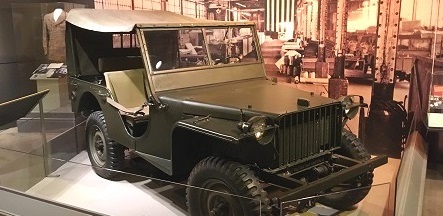 |
The very first Jeep prototype was manufactured by the American Bantam Car Company of Butler, PA in 1941 under a very tight 49-day turnaround. The Army wanted the vehicle to serve a "reconnaissance" purpose to replace the need for motorcycles. Courtesy Heinz History Center |
The "Cradle" of the Republican Party
|
 |
The Republican Party -- also known as the "Grand Old Party" or "G.O.P." for short -- was founded in 1854 by anti-slavery interests who opposed the Kansas-Nebraska Act, a law that allowed for the potential extension of slavery to the western U.S. territories. The party promoted economic reforms in areas such as banking, manufacturing and railroads. The first G.O.P. convention was held in Pittsburgh's Lafayette Hall on Feb. 22, 1856. Emerging from this were nominees John C. Frémont for president and William L. Dayton for vice president. These candidates garnered 1,342,345 votes, or 33.1% percent of the popular vote, and 114 electoral votes, losing to the Democratic ticket of James Buchanan and John C. Breckinridge. Courtesy Library of Congress |
Coming in the Future |
| |
Koppers Company, Inc. - Founded by German engineer Heinrich Koppers, the company developed new coke oven technology and in 1914 became established in Pittsburgh. In 1988, following its purchase by a British conglomerate, Koppers became focused on railroad and utility products, coal tar distillation and specialty chemical production. |
|
| Copyright
© 2014-2025 Mark A. Miner. This page is strictly for use as a free educational
resource for the public. |
|
|
| |


 For more than 250 years,
since its founding as a frontier military outpost, Pittsburgh and
Southwestern Pennsylvania have been an epicenter for world-changing creation and innovation.
For more than 250 years,
since its founding as a frontier military outpost, Pittsburgh and
Southwestern Pennsylvania have been an epicenter for world-changing creation and innovation. 
































































